Future looks pink for Pakistan's ball-makers
AFP
SIALKOT: As cricket stages its second day-night Test this week, factory workers in Pakistan will be among the avid television viewers -- they might even have made the innovative pink balls being used by their heroes.
Pakistan host West Indies in Dubai in a five-day/night Test featuring the pink ball, starting Thursday. It is a match that will be closely followed in Sialkot, the city that is the country's sports manufacturing hub.
Pakistan's sports goods industry is positioning itself to be the top supplier of the new pink balls aimed at dragging the traditional format -- the five-day game -- into the 21st century.
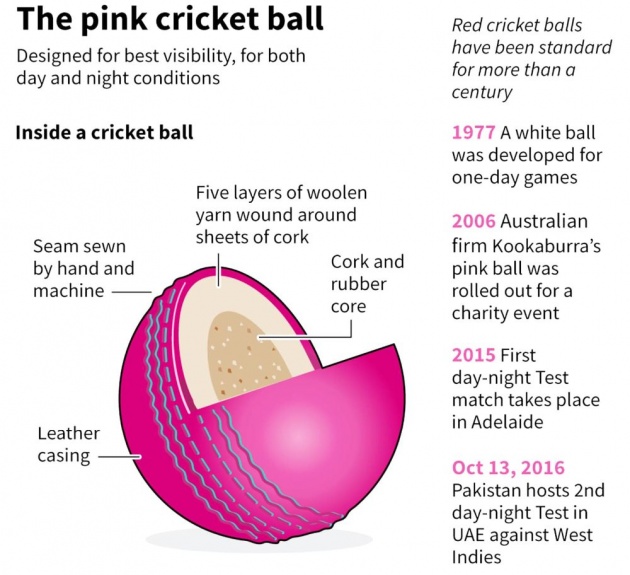
Image Credit: www.dawn.com
“We are probably making 15,000 to 20,000 pink balls per year. The numbers of pink balls are growing,” said Khawar Anwar Khawaja, chief executive of Grays of Cambridge, who have been making cricket balls since 1953.
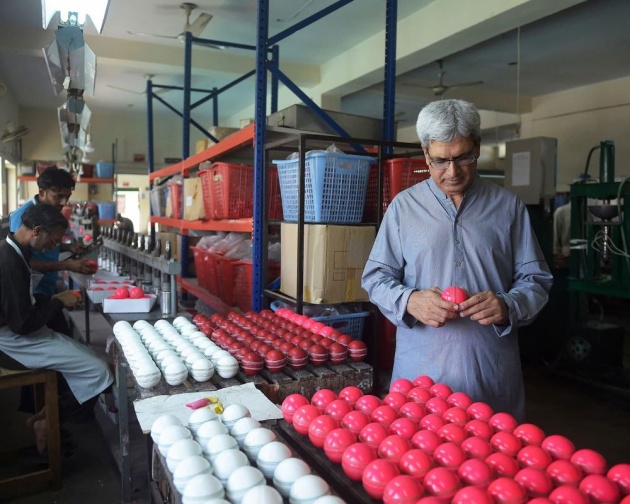
Image Credit: www.dawn.com
The high visibility balls made their Test debut last year when Australia played New Zealand in Adelaide, to mixed reviews. But cricket's bosses are committed to increasing the number of day/night Tests as they bid to reverse the trend of falling attendances.
After years of trials, the governing body have plumped for pink to replace traditional red under lights, as it is visible against both dark skies and the traditional Test-match white kits.
Two major factories and dozens of small units in Sialkot are on the case.
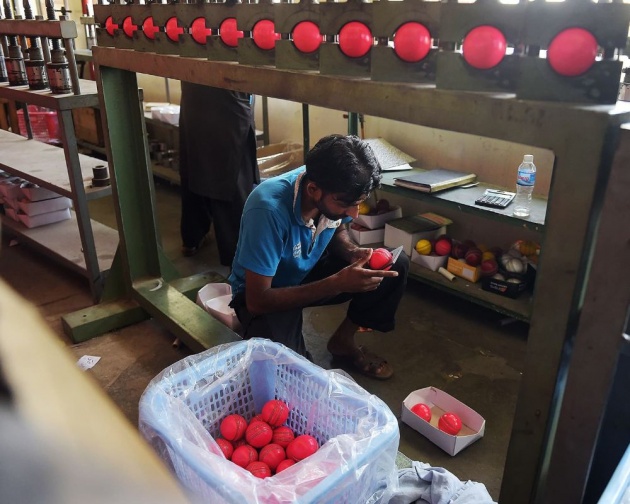
A Pakistani worker measures pink cricket balls at the Grays of Cambridge factory in Sialkot.—AFP
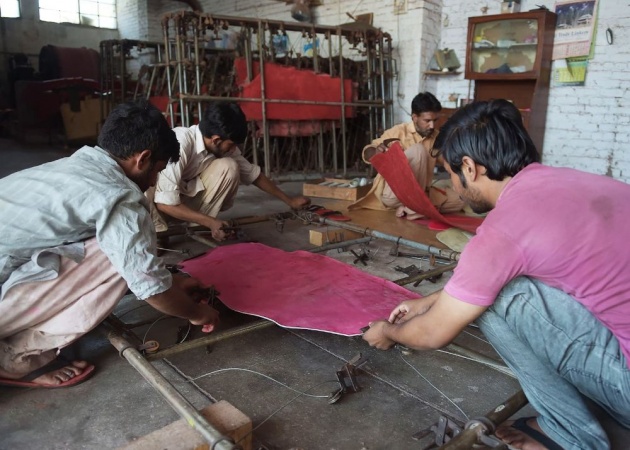
Pakistani workers fix leather for pink cricket balls in a frame at the Grays of Cambridge factory in Sialkot. —AFP
New colour, old format:
“Last year we produced about 120,000 cricket balls (all colours), but our demand is growing. We hope to do this year minimum hopefully around 150,000 balls,” Khawaja added, beaming with pride as his workers stitched the balls by hand behind him.
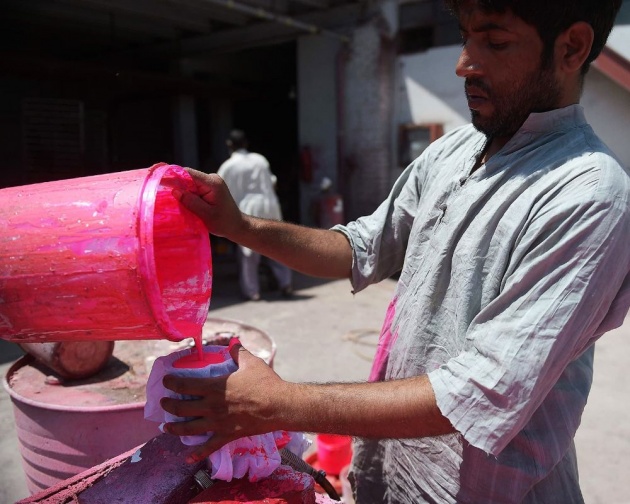
A Pakistani worker prepares the pink dye for pink cricket balls at the Grays of Cambridge factory in Sialkot.—AFP
Test cricket is the sport's longest format with matches that despite being scheduled for five days of play, can still end in a draw. With breaks for lunch and tea, Tests evoke a bygone era and are losing support to the modern, shortest, form of the game, Twenty20.
Filling stadiums across five days and attracting advertisers has increasingly become a problem.
Misbah-ul-Haq, Pakistan's celebrated captain who last month took them to number one in the rankings, is a firm believer that the “future belongs to night Tests”.
“Since the game is played for the fans and for the audience, this night cricket is the future and it's definitely good for cricket,” he told reporters last week.
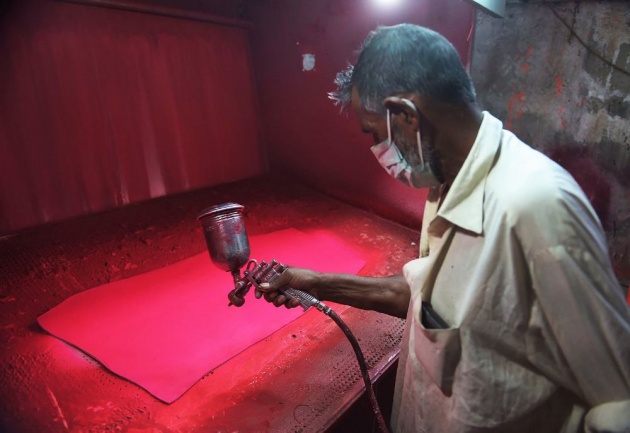
Pakistani workers sprays colour onto leather for pink cricket balls at the Grays of Cambridge factory in Sialkot.—AFP
Proud history:
The history of sports goods manufacturing in Sialkot dates back to the 19th century when locals first began to produce footballs for the British army, then the occupying power.
Today, the city's sports exports are worth $900 million annually, according to official figures, and have supplied balls for international competitions such as 2014 FIFA World Cup.
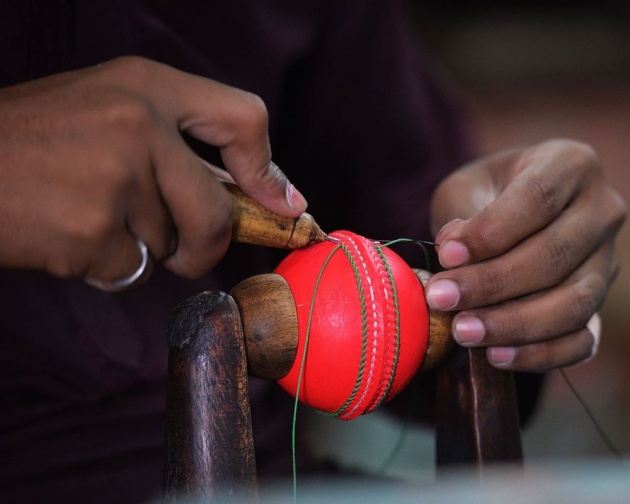
A Pakistani worker stitches a pink cricket ball at the Malik Sports factory in Sialkot. —AFP
---------------------------------
Established in 1953, Grays of Cambridge is Pakistan's premier brand and produces red, white, pink and orange balls for the leading markets in Australia and England for top international brands such as Dukes and Gray-Nicolls.
And local manufacturers expect a deluge of orders.
Cricket balls, weighing between 142 to 163 grams depending on the category are sold for between $4 and $25.
They are stitched from four leather pieces which are converted into two round shaped cups after colouring the raw leather -- usually from cattle -- and moulding it on machines, before the final stitching by hand or machine.
The balls are then wrapped in crystal polythene covers and packed in hardboard boxes -- ready to be shipped overseas.
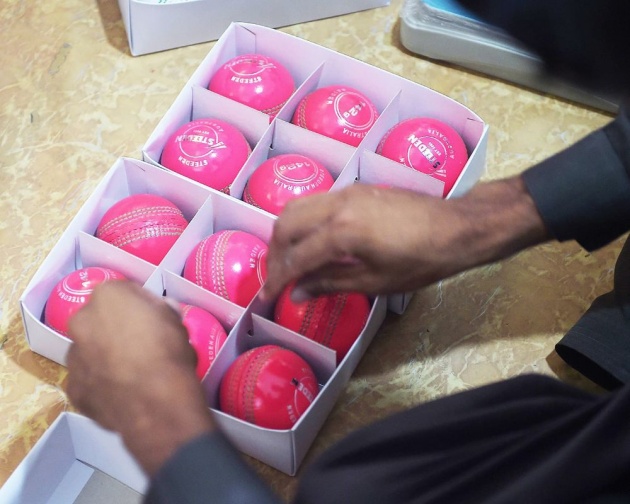
A Pakistani worker packs pink cricket balls into boxes at the Grays of Cambridge factory in Sialkot.—AFP/File
The use of pink balls has been trialled by some domestic leagues, but has had its share of teething problems. Both the Australian and New Zealand teams complained about the pink ball's ability to swing (move in the air) and that it became too soft too soon, making it harder for batsmen to score runs.
Misbah, however, said players would adapt to the conditions in time.
“Since the game is played for the fans and for the audience, this night cricket is the future and it's definitely good for cricket,” he said.
“The more frequently we play under lights, it will give more exposure and allow players to get used to it. “
Video Source: Youtube
Images Source: www.dawn.com
Article Source: http://www.dawn.com/news/1289691
Its a 100% Copyright Article of www.dawn.com & I just share it with all original sources and links.
Hope You Will Like It.... :)
BUZZ & Share :)



